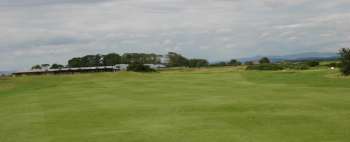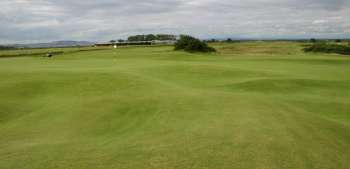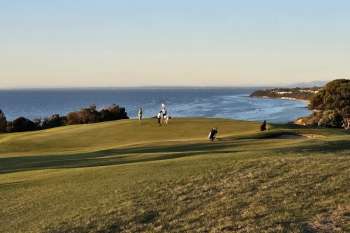St Andrews Stink – Dawson claims ‘over-reaction’ to Old Course changes
With tractors on the ground and the sacred turf at St Andrews under the knife as we speak, it seems an appropriate time to look at Martin Hawtree’s co-designer Peter Dawson, and the apparently ‘hysterical’ reaction to their changes on The Old Course.
Dawson recently accompanied a handful of British journalists on a tour of St Andrews, and discussed the work being carried out as well as the criticism received from detractors he describes as mostly ‘ill-informed’. Dawson’s most telling comment, however, was an acknowledgement to Adam Lawrence of Golf Course Architecture magazine that these changes to The Old Course were ‘the biggest in a century’.
Dawson added that, ‘it’s completely illogical to think a course built so long ago can stay the same. What you have to do absolutely as a top priority is preserve what the course is all about and what its essential strategy is.’ More on that later.
The first comment to make about the ‘biggest changes in a century’, are to once again point out the absurdity of the game’s governing body being involved in such works. This is the most sacred ground in golf, and the R&A is the body that has allowed technology to run rampant and, in their own view, to render certain areas of this special course as too easy.
Dawson himself has argued that the plateauing of driving distances in recent times proves that the action taken by the R&A and the USGA to control distance has been effective. What he refuses to accept is that they lost control of the situation prior to capping driver heads at 460cc and prior to ‘monitoring golf ball distances’. We don’t need status quo for golf to be healthy; we need rollback, plain and simple. And exhibit A for the rollback argument is The Old Course, with all her outrageous back tees…and now these ‘biggest in a century’ changes.
Dawson’s main argument against those critical of his changes has been to point out that the holes have, in fact, been changed regularly in the past. Says Dawson of its evolution, ‘The Old Course has developed at various rates in its history. It’s simply not true to say the course has stood still.’
It’s an argument that others defending the project have also made, but one that misses the point here entirely. Yes, on a superficial level The Old Course is constantly evolving. It’s what makes the game of golf so fascinating, that greens shrink and bunkers change shape and erode, are repaired or re-revetted over time and conditions vary from season to season and year to year. There are hundreds of courses worldwide that are structurally changed on an annual basis, but The Old Course holes have not been ‘redesigned’ in any way for more than a century. The integrity of their design has remained intact.
Dawson tried to quell discontent by insisting that the changes proposed by he and Hawtree fell into the ‘very slight category’, but the concern many have is not only the scope of works proposed here, but the people carrying them out.
Lets not forget, that the last major design changes made to The Old Course were by Old Tom Morris. At the time Old Tom was keeper of the green at St Andrews. He was the head greenkeeper, the club maker, the ball maker, caddie master and the town’s chief professional. He played with princes and paupers, and knew every blade of grass on that course better than anyone who has ever lived.
It should also be noted that golf was much simpler back then. Leading players couldn’t hit the ball 400 yards and because most played match rounds rather than stroke rounds it wouldn’t have mattered anyway if they could. Old Tom wasn’t protecting par, he was providing practical solutions to very real problems, and with the interests of all players firmly in mind.
Old Tom in the late 1800s was a genuine golfing icon, and almost unchallenged as the authority on both The Old Course and the business of course design. It’s not a reputation Martin Hawtree enjoys, for as nice a man as he is the truth remains that very little of his design work is well regarded.
Of Hawtree, Dawson has gushed that he is the perfect man to make the alterations at St Andrews because ‘one of his great strengths is making changes look as though they have always been there.’ Dawson has clearly not seen any of Hawtree’s work in Australia, or asked members at Kooyonga, Yarra Yarra and Royal Melbourne whether his touches appear as though they have always been there.
Regardless of Hawtree’s design credentials, or whether the more minor alterations might actually improve the holes, some of the work being carried out at St Andrews is simply unnecessary. The greatest travesty appears to be the greenside alterations on the 2nd hole.
The 2nd is a fascinating par four with aggressive and conservative options from both the tee and also into the green. The putting surface itself is beyond exceptional, but in Dawson and Hawtree’s view is too easy on the right hand side. The professionals don’t ever get to experience right-side pins, so the designers have decided to add contour to the right-hand fringe and to push bunkers right up against the edge of the green surface. Rees Jones would have been proud, for not only have they stiffened the challenge for the professionals they have taken away the width, sport and strategy for the average golfer.
Somewhat curiously, Dawson told Adam Lawrence that (post change) ‘when the pin is placed on the right side of the 2nd green, the best line of approach will be from the centre left of the fairway, near to Cheape's bunker.’
Remember that Peter Dawson has said he wants to ‘preserve the essential strategy of the golf course’ but the question needs to be asked, for whom?
By moving bunkers closer to the 2nd green it’s clear that he sees the strategy for better players as being more important than how the average golfer plays the game. This has never been the case before at St Andrews. Other changes that Hawtree and Dawson have slated for next winter suggest a similar disregard for the average amateur.
We are not suggesting here that The Old Course has never changed or even that it should never be touched, but instead that it should be held to a higher standard than every other links and not be altered for the sake of the professional game. Dawson has described the work as simply addressing a few ‘weaknesses’ with the existing layout. If that’s truly the case, then it’s a very slippery slope from here.
Back to News
More News
Report reveals golf's $3.3 billion contribution to Australia
AGIC report reveals total annual benefits to the Australian community, economy and environment from golf.
Cape Wickham Links – The Inside Design Story
Co-designer Darius Oliver reveals the truth behind the design of Australia’s premier modern golf course
Have your say on the future of Moore Park Golf
Golfers unite – another one of our cherished public access golf courses is under threat
Cameron John wins The National Tournament by two strokes
Victorian claims breakthrough professional victory at The National Tournament presented by BMW





